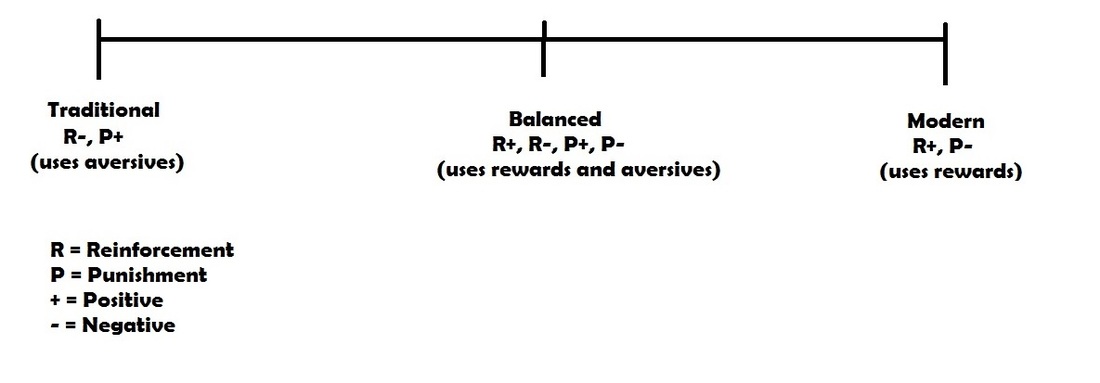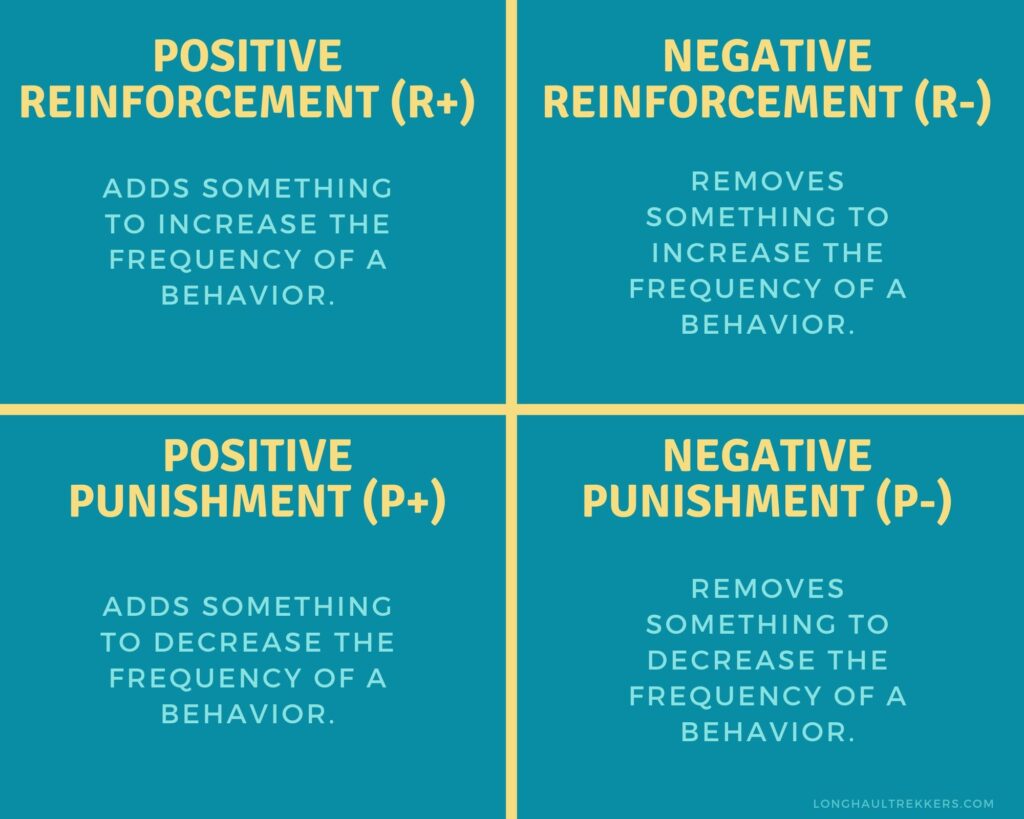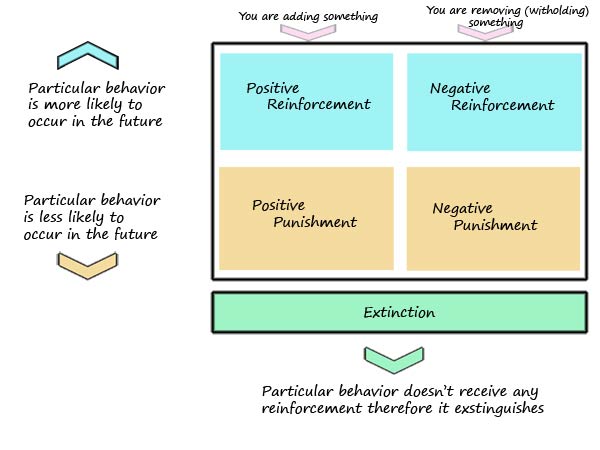What’s the Difference: Force-Free vs. Balanced Dog Training?
Last Updated on April 15, 2024 by Petpalace54
Force-free dog training focuses solely on positive reinforcement and reward-based techniques, while balanced dog training involves the use of both reward-based techniques and aversive consequences. This means that in balanced training, the dog learns that their choices and behaviors can result in either pleasant or unpleasant results.
What’s the Difference: Force-Free vs. Balanced Dog Training? Generally, dog owners often have trouble choosing between force-free and balanced dog training techniques. While force-free trainers use only positive reinforcement and avoid all punishments and intimidation, balanced trainers use a mix of techniques to reward good behavior and discourage bad choices.
While force-free training is effective for most dogs, some dogs may require more physical correction to learn certain behaviors & may benefit from the balanced approach. Ultimately, choosing the right technique depends on the dog’s age, personality, and specific training needs. It is important to do your research and consult with a professional dog trainer to determine which technique is best for your furry friend.
Table of Contents
- 1 What Is Force-free Dog Training?
- 2 What Is Balanced Dog Training?
- 3 Differences Between Force-Free vs. Balanced Dog Training
- 4 What Makes Force-free Dog Training Better?
- 5 Why Doesn’t Force-free Dog Training Work For All Dogs?
- 6 Examples Of Dog Training Methods
- 7 What To Look For When Hiring A Dog Trainer
- 8 Frequently Asked Questions On What’s the Difference: Force-Free vs. Balanced Dog Training?
- 9 Conclusion
What Is Force-free Dog Training?
Force-free dog training is a method that focuses on positive reinforcement while avoiding the use of force, fear, or pain. In contrast, balanced dog training involves using both reward-based techniques and aversive consequences. Force-free training encourages good behavior and can be effective for many dogs while avoiding the negative side effects of punishment-based approaches.
What is Force-Free Dog Training?
With the increasing awareness of animal welfare, pet owners all over the world are making the switch to force-free dog training. This type of training focuses on creating a positive relationship between the dog and the owner while reducing the use of aversive techniques and punishment. Force-free training also goes by positive reinforcement training.
Definition of Force-Free Training
Force-free training adheres to the principles of positive reinforcement in which good behavior is rewarded with treats, praises, & toys instead of punishment. This type of training doesn’t use physical force or intimidation to train dogs. Instead, it uses techniques such as clicker training, shaping, and targeting to train dogs.
Positive Reinforcement Techniques Used
Positive reinforcement techniques are used to encourage good behavior. This includes using treats, verbal praises, and toys to shape the behavior you want. Instead of punishing the dog for bad behavior, positive reinforcement training redirects the dog’s attention towards good behavior with rewards. Positive reinforcement training has been known to build a closer relationship between the owner and the dog.
Benefits of Force-Free Training
Force-free training has several benefits. One of its main advantages is that it reduces the risk of aggression & fear in dogs. Owners who use force-free training are less likely to have dogs with behavior problems compared to those who use punishment-based training. Positive reinforcement training is also a humane way to train dogs that don’t inflict pain or fear. The trust and respect gained from force-free training leads to a better relationship between the owner and dog, making training a more enjoyable experience.
In conclusion, force-free training is a humane and effective way to train dogs. It focuses on rewarding good behavior with positive reinforcement techniques like treats and praise. This type of training has been proven to reduce behavior problems and strengthen the bond between the owner and the dog. Trust and respect are the essential components of force-free training.

Credit: www.trainmeplease.com.au
What Is Balanced Dog Training?
Balanced dog training refers to a training approach that uses both reward-based techniques and aversive consequences. The difference between force-free vs balanced dog training is that force-free training doesn’t use coercion or intimidation, while balanced training shows the dog that their choices and behaviors can result in either pleasant or unpleasant outcomes.
The goal of balanced training is to create a well-behaved dog through effective communication & understanding.
unpleasant outcomes, depending on what they do. Balanced training is a way of training that uses a combination of techniques to help dogs learn and behave positively.
Definition Of Balanced Training
Balanced dog training means using a combination of positive reinforcement and corrective measures to teach a dog what behavior is expected of them. This training starts with positive reinforcement to reward good behavior and teaches the dog what is expected of them. When the dog doesn’t comply, it turns to corrective measures to steer them back on track. This method of training is used to create a more well-rounded approach to dog training that combines both rewards and consequences.
Combination Of Techniques Used
Balanced dog training uses a combination of techniques such as positive reinforcement, negative reinforcement, and punishment to teach dogs the desired behavior. Positive reinforcement techniques that use treats, praise, and rewards are often used to reinforce good behavior, while negative reinforcement techniques like removing unpleasant stimuli when they exhibit the desired behavior help the dog understand how to behave. Punishment techniques such as leash corrections and verbal commands can also be used to steer dogs back into desired behavior.
Benefits Of Balanced Training
Balanced dog training has many benefits, including helping dogs develop self-control, reducing unwanted behaviors, & providing a safe environment for dogs and humans. This method of dog training can also help build a stronger bond between dog and owner as it creates an open and clear line of communication between them. Balanced dog training is essential for stubborn breeds that require a firm hand. It is also a beneficial training method for dogs that have behavior issues that require correction. Ultimately, balanced dog training creates a better-behaved, more obedient dog that is a happier and more contented pet for their owners.
Differences Between Force-Free vs. Balanced Dog Training
In force-free dog training, positive reinforcement is used to encourage good behavior. In balanced training, both reward-based techniques and aversive consequences are used to shape a dog’s behavior. Force-free methods do not involve punishment or intimidation, making it a gentler technique compared to balanced training.
Differences Between Force-Free and Balanced Dog Training
Training your furry companion is undoubtedly one of the most important aspects of being a dog owner. However, when it comes to choosing the right training method, you might feel confused with the plethora of options available in the market. Two popular dog training methods that often come up during these discussions are force-free and balanced training. Force-free training involves positive reinforcement and avoids any use of punishment or physical coercion. On the other hand, balanced training involves a mix of positive reinforcement and corrective measures to correct undesirable behavior.
Methods Used for Training
Force-free trainers mainly rely on positive reinforcement, which involves rewarding good behavior. The rewards can range from treats, toys, praises, or bestowals such as a belly rub or ear scratch. On the contrary, balanced training utilizes both positive & negative reinforcement. While treats and praises are offered for good behavior, the undesired behavior is corrected or punished using water sprays, choke chains, or electric collars.
Approach to Discipline
In force-free training, the emphasis is placed on creating a positive and trusting relationship with your dog. Discipline is usually in the form of asking the dog to perform a different behavior or removing the reward for bad behavior. Conversely, in balanced training, punishment and correction are used as the primary means of disciplining a dog. This approach aims at teaching the dog to avoid undesirable behavior.
Effectiveness & Success Rates
Force-free training has proven to be quite effective in producing desirable behavior from dogs, & since it mostly relies on reward-based strategies, it has a higher success rate. Furthermore, it enhances the bond between the dog and the owner as it is focused on positive reinforcement. On the other hand, balanced training, while effective in curbing undesirable behavior, sometimes tends to strain the relationship between the dog & its owner as it relies on negative reinforcement.
In conclusion, there are fundamental differences between force-free and balanced dog training methods. Both approaches have their pros and cons and their effectiveness depends on the trainer’s skills and the dog’s personality. It’s important to research & choose the best method that works for you and your furry companion.
What Makes Force-free Dog Training Better?
Force-free dog training is a method that does not involve the use of force, coercion, or pain on dogs, but instead relies on positive reinforcement techniques to encourage desired behaviors. This is different from balanced dog training, which includes both rewarding good behaviors & punishing bad behaviors.
Studies suggest that force-free training leads to fewer problem behaviors in dogs compared to punishment-based methods.
What Makes Force-Free Dog Training Better?
When it comes to training your furry friend, there are several training methods to choose from. Two of the most common training methods are force-free and balanced dog training. While both methods have their advantages and disadvantages, in this section, we will focus on what makes force-free dog training better.
Positive Reinforcement
One of the primary reasons for using force-free training is positive reinforcement. This method of training relies on rewards rather than punishment. The dog is rewarded with treats, toys, & praise for good behavior. This positive reinforcement encourages the dog to repeat the behavior, promoting learning in a fun, non-stressful way.
Enhancing Human-Canine Relationship
Force-free dog training fosters a strong bond between the handler and the dog. This positive relationship is built on trust, mutual respect, and love. The trainer becomes a positive influence in the dog’s life, leading to a happier, more confident pet.
Long-Term Positive Results
Force-free training yields long-term positive results. Dogs that are trained with positive reinforcement tend to exhibit fewer problem behaviors such as aggression, fear, & attention-seeking. Conversely, dogs trained using punishment are more likely to show fearful and aggressive behavior.
In conclusion, force-free dog training is an effective way to establish a positive and respectful relationship between you and your dog. Positive reinforcement, enhancing the human-canine relationship, & long-term positive results are what make this method better than balanced dog training. Try force-free training with your furry friend and see the difference for yourself.
Why Doesn’t Force-free Dog Training Work For All Dogs?
Balanced dog training involves both reward-based techniques and aversive consequences, whereas force-free training uses only positive reinforcement techniques without any use of force, coercion, threats, or intimidation. While force-free training may work for some dogs, it may not be effective for all dogs and may require additional methods to address behavior issues.
It’s important to understand the differences between these two training methods before deciding which one works best for your dog.
While force-free training is gaining popularity among dog owners and trainers, it may not work for all dogs. In this section, we’ll explore the situations where force-free training may not be effective and the possible risks and drawbacks that come with using this approach.
Situations Where Force-free Training May Not Be Effective
Force-free training relies on positive reinforcement, which means rewarding good behavior and ignoring bad behavior, rather than punishing it. However, there are some situations where this approach may not work:
- Aggressive dogs: For dogs that display aggressive behavior, force-free training may not be the best solution. In such cases, a balanced approach that involves positive reinforcement & corrective measures may be more effective.
- Dogs with separation anxiety: Separation anxiety is a common issue among dogs, but force-free training may not work for all cases. Dogs with severe separation anxiety may need more structured training & behavior modification techniques.
- Highly energetic dogs: For dogs with high energy levels, force-free training may not be enough to keep them focused and engaged. Such dogs may require more structured training that involves both positive reinforcement & correction techniques.
Possible Risks And Drawbacks
While force-free training may seem like an ideal approach, it also comes with some risks and drawbacks:
- Less effective for some dogs: Force-free training may not work for all dogs, especially those with behavioral issues that require more structured training.
- May be time-consuming: Due to the nature of positive reinforcement training, it may take longer to see results. This can be frustrating for some dog owners who want to see immediate changes in their dog’s behavior.
- Requires consistency and patience: Force-free training involves consistent positive reinforcement and ignoring bad behavior, which requires patience and consistency on the part of the trainer.
- May not address all behavioral issues: While force-free training is effective at addressing some behavioral issues, it may not be effective at addressing all types of behavior problems. In such cases, a more structured approach may be needed.
In conclusion, while force-free training is gaining popularity among dog owners & trainers, it may not work for all dogs. There are certain situations where a more structured approach that involves both positive reinforcement and correction techniques may be more effective. It’s important to understand the risks & drawbacks of force-free training before deciding on an approach for your dog’s training and behavior modification.

Credit: www.facebook.com
Examples Of Dog Training Methods
Balanced dog training involves the use of both reward-based techniques and aversive consequences, while force-free training focuses only on positive reinforcement. Owners who used only positive reinforcement training had dogs who were the least likely to display problem behaviors like attention-seeking, fear, & aggression.
Conversely, owners who used punishment were more likely to have dogs who had trouble with both aggression and fearful behavior.
Examples of Dog Training Methods
When it comes to dog training, there are 2 primary methods – force-free and balanced training. Force-free training focuses on using positive reinforcement techniques to encourage good behavior, while balanced training uses a mix of positive reinforcement and aversive tools to shape behavior. Here are three of the most commonly used dog training methods:
Clicker Training
Clicker training is a type of positive reinforcement training that uses a device called a clicker to mark desirable behavior. With clicker training, the clicker is used to mark the exact moment the dog performs the desired behavior and is immediately followed by a treat or reward. The clicker sound acts as a signal to the dog that they have done something right, & encourages them to repeat the behavior in the future.
Classical Conditioning
Classical conditioning is a type of learning where the dog associates a neutral stimulus with a new, learned response. For example, if a dog is scared of a vacuum cleaner, a trainer might use classical conditioning to help the dog learn to associate the sound of the vacuum cleaner with positive rewards, like treats or playtime. Over time, the dog will learn to associate the sound of the vacuum cleaner with positive experiences & become less fearful of it.
Operant Conditioning
Operant conditioning is a type of learning where the dog associates a behavior with a consequence. With positive reinforcement operant conditioning, desirable behavior is reinforced with a reward or praise. With negative reinforcement operant conditioning, undesirable behavior is stopped by removing an aversive stimulus, like a leash or a collar.
In conclusion, dog training can be done using a variety of methods, each with its unique advantages and disadvantages. It is important for dog owners to understand What’s the Difference: Force-Free vs. Balanced Dog Training?, and to choose a method that works best for their individual dog’s needs. Clicker training, classical conditioning, and operant conditioning are just a few examples of the different approaches to dog training that can be used to help improve a dog’s behavior & strengthen the bond between owner and pet.
What To Look For When Hiring A Dog Trainer
When hiring a dog trainer, it’s crucial to understand the different approaches to training, such as force-free and balanced. Force-free training involves positive reinforcement, while balanced training uses both reward-based techniques & aversive consequences. It’s essential to choose a trainer who aligns with your philosophy and has experience using the method you prefer.
When hiring a dog trainer, it is important to look for someone who aligns with your beliefs and goals for your furry friend. In this section, we will discuss three important factors to consider when hiring a dog trainer: their qualifications and certifications, philosophy and approach to training, reviews & recommendations.
Qualifications And Certifications
When searching for a dog trainer, it is essential to verify their qualifications and certifications. Look for individuals who have completed training and coursework through recognized organizations, such as the Certification Council for Professional Dog Trainers (CCPDT) or the International Association of Animal Behavior Consultants (IAABC). These certifications ensure that the trainer has met specific standards for knowledge and experience in dog behavior and training. Additionally, trainers with a veterinary background or a degree in animal behavior science provide added assurance that they have the expertise to handle any issues that may arise during the training process.
Philosophy And Approach To Training
Every dog trainer has a unique philosophy and approach to training. Some trainers may focus on force-free training, which utilizes positive reinforcement to encourage good behavior & discourage unwanted behavior. Others may believe in balanced training, which incorporates positive reinforcement and aversive techniques to correct behavior. It’s crucial to find a trainer who aligns with your beliefs and training goals for your dog. Ask the trainer about their training methods, how they handle unwanted behavior, and how they reward desired behavior. This will give you a better understanding of whether their philosophy & approach will work for you and your furry friend.
Reviews And Recommendations
Lastly, What’s the Difference: Force-Free vs. Balanced Dog Training? It’s essential to consider the trainer’s reputation and success rate. Look for reviews and recommendations from past clients or conduct research online through websites like Yelp and Google Reviews. You can also ask for referrals from your veterinarian or local pet store. A good trainer will have a proven track record of success and happy clients who can attest to their expertise. Don’t hesitate to ask for references & examples of their previous work.
In summary, when hiring a dog trainer, it’s crucial to consider their qualifications, philosophy, approach, reviews, and recommendations. With these factors in mind, you can find a trainer who will help you achieve your training goals and build a positive relationship with your furry friend.

Credit: longhaultrekkers.com
Frequently Asked Questions On What’s the Difference: Force-Free vs. Balanced Dog Training?
What Is The Difference Between Balanced And Force-free Training?
Balanced training uses both positive and negative reinforcement while force-free training mainly relies on positive reinforcement without using coercive techniques or causing harm to the animal. Balanced training shows the dog that its choices & behaviors can result in pleasant or unpleasant outcomes, while force-free training avoids using punishment and anything that invokes fear or panic.
Positive reinforcement is the main technique in force-free training.
Why Is Force-free Dog Training Better?
Force-free dog training is a better approach because it avoids using force, coercion, threats, and intimidation which may harm the dog. Positive reinforcement is used to reward good behavior and teach desired actions. Owners using positive reinforcement training had dogs who showed fewer problem behaviors like attention-seeking, fear, & aggression, compared to those who used punishment-based training methods.
What Does Balanced Dog Training Mean?
Balanced dog training is an approach to training or behavior modification that uses both reward-based techniques and aversive consequences. This means that the trainer shows dogs that their choices & behaviors can result in either pleasant or unpleasant outcomes. In contrast, force-free training is a method of training dogs without using force, coercion, threats, or punishments, and avoiding anything that invokes fear or pain on the animal.
What Is A Force-free Dog Trainer?
A force-free dog trainer is someone who uses positive reinforcement and reward-based training methods to teach dogs. They do not use any force, coercion, threats, or intimidation or inflict pain on the animal. This approach avoids punishments or anything that invokes fear and panic, cause pain, or harm the dog.
Conclusion
Balanced dog training has been a topic of debate for a long time. Both approaches have their benefits and drawbacks. While force-free training relies on positive reinforcement and avoids any form of punishment or fear, balanced training uses a mix of positive and negative reinforcement to train dogs.
What’s the Difference: Force-Free vs. Balanced Dog Training? The key is to choose the method that works best for your dog’s personality and needs. Ultimately, a well-trained and happy dog is all that matters. Understanding the difference between these two methods is crucial to making the right decision for your furry friend.






